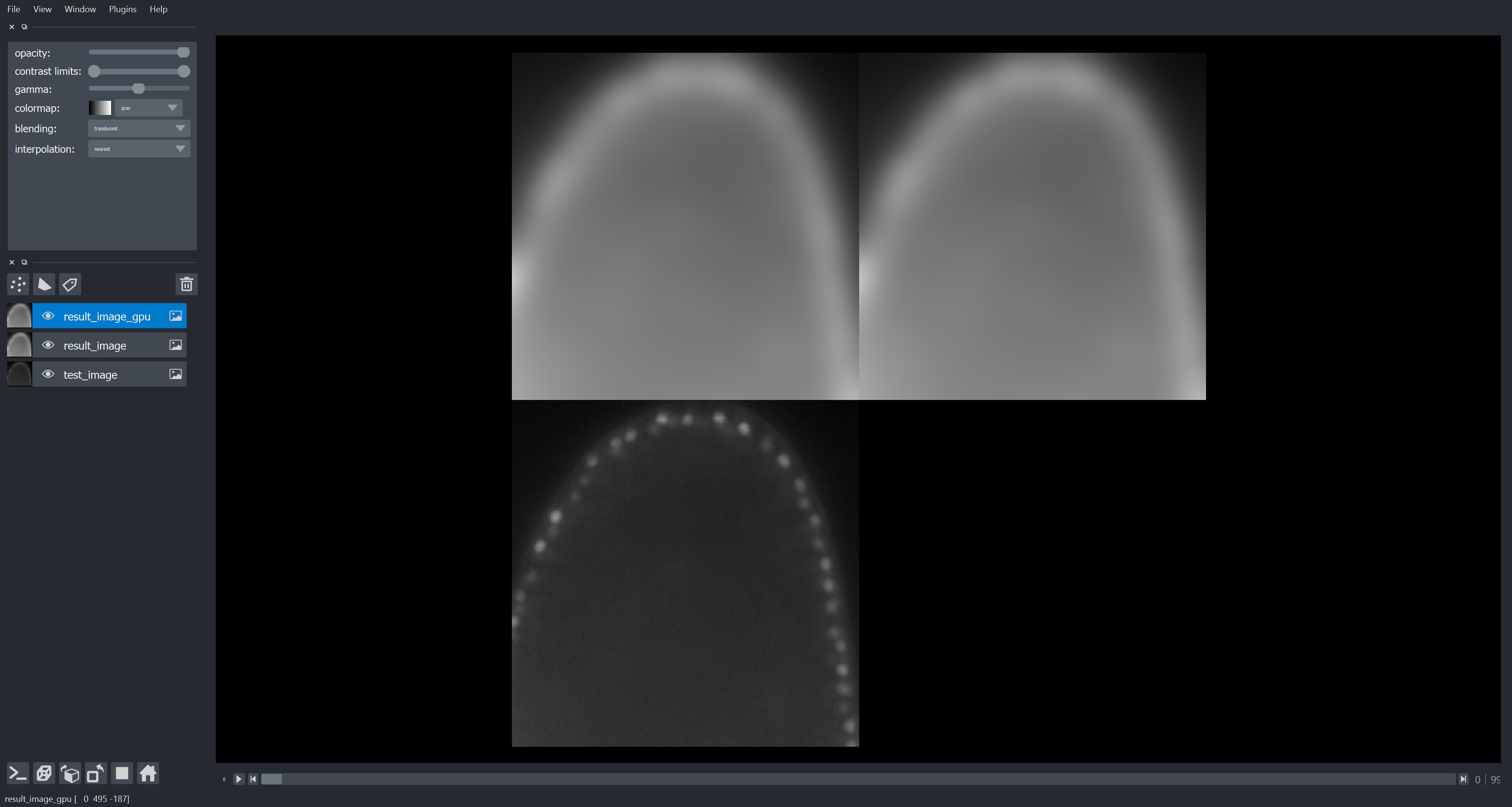Why GPU-acceleration makes sense#
In this notebook we demonstrate speedup through GPU-acceleration using a Gaussian blur filter. We’ll be using the clEsperanto library which uses OpenCL and is compatible to a wide range of Intel, AMD and NVidia GPUs. Feel free to run it on your GPU and measure the speedup!
See also
Note: benchmarking results vary heavily depending on image size, kernel size, used operations, parameters and used hardware. Use this notebook to adapt it to your use-case scenario and benchmark on your target hardware. If you have different scenarios or use-cases, you are very welcome to submit your notebook as pull-request!
import pyclesperanto_prototype as cle
from skimage import filters
import time
# to measure kernel execution duration properly, we need to set this flag. It will slow down exection of workflows a bit though
cle.set_wait_for_kernel_finish(True)
# selet a GPU with the following in the name. This will fallback to any other GPU if none with this name is found
cle.select_device('RTX')
<GeForce RTX 2080 Ti on Platform: NVIDIA CUDA (1 refs)>
# test data
import numpy as np
from skimage.io import imread
test_image = imread('Lund_000500_resampled-cropped.tif')
sigma = 10
# convolve with scikit-image
result_image = None
for i in range(0, 10):
start_time = time.time()
result_image = filters.gaussian(test_image, output=result_image, sigma=sigma)
print("skimage Gaussian duration: " + str(time.time() - start_time))
skimage Gaussian duration: 0.644662618637085
skimage Gaussian duration: 0.63631272315979
skimage Gaussian duration: 0.6193966865539551
skimage Gaussian duration: 0.6499156951904297
skimage Gaussian duration: 0.6301307678222656
skimage Gaussian duration: 0.6531178951263428
skimage Gaussian duration: 0.6489198207855225
skimage Gaussian duration: 0.6308994293212891
skimage Gaussian duration: 0.7410404682159424
skimage Gaussian duration: 0.8148434162139893
# convolve with pyclesperanto
result_image_gpu = None
test_image_gpu = cle.push(test_image)
for i in range(0, 10):
start_time = time.time()
result_image_gpu = cle.gaussian_blur(test_image_gpu, result_image_gpu, sigma_x=sigma, sigma_y=sigma, sigma_z=sigma)
print("pyclesperanto Gaussian duration: " + str(time.time() - start_time))
pyclesperanto Gaussian duration: 0.026170730590820312
pyclesperanto Gaussian duration: 0.002056121826171875
pyclesperanto Gaussian duration: 0.015659093856811523
pyclesperanto Gaussian duration: 0.019225597381591797
pyclesperanto Gaussian duration: 0.01566314697265625
pyclesperanto Gaussian duration: 0.015616178512573242
pyclesperanto Gaussian duration: 0.01566910743713379
pyclesperanto Gaussian duration: 0.015576839447021484
pyclesperanto Gaussian duration: 0.01562190055847168
pyclesperanto Gaussian duration: 0.023794889450073242
Let’s just check if the results look similar
import napari
viewer = napari.Viewer()
napari.run()
viewer.add_image(test_image)
viewer.add_image(result_image)
viewer.add_image(result_image_gpu)
<Image layer 'result_image_gpu' at 0x1d3b659c460>
napari.utils.nbscreenshot(viewer)

